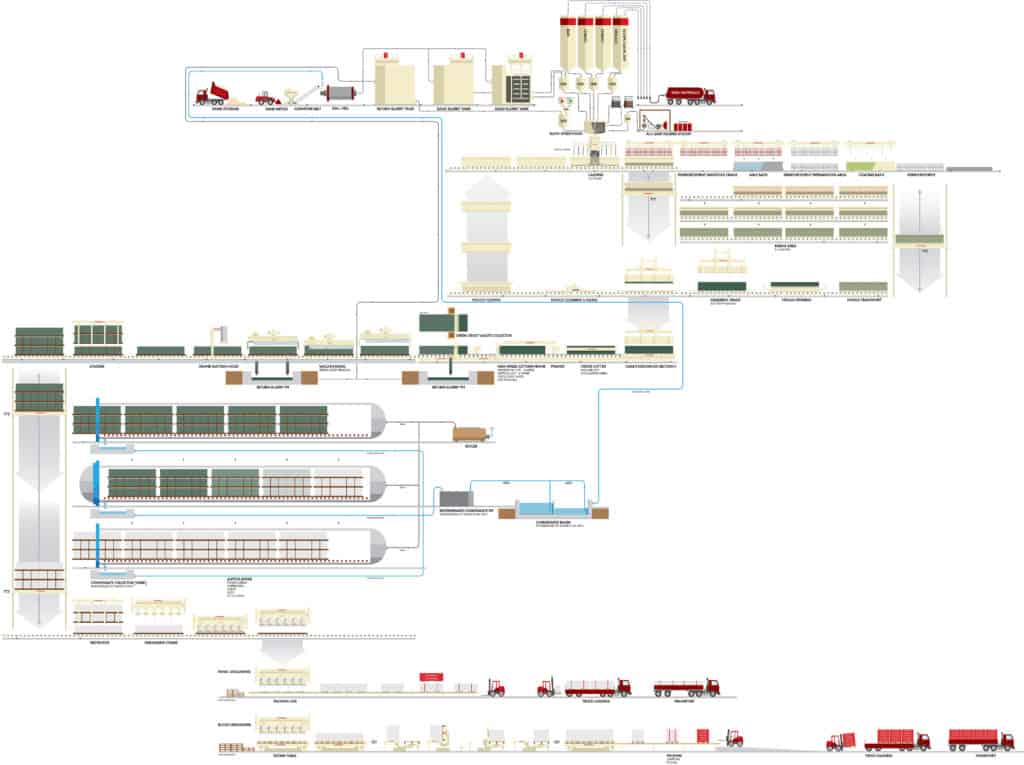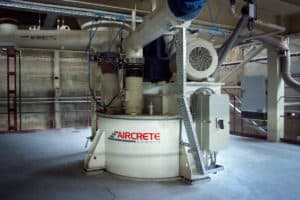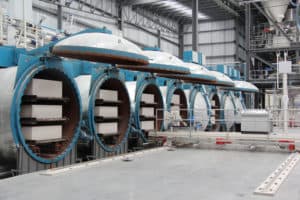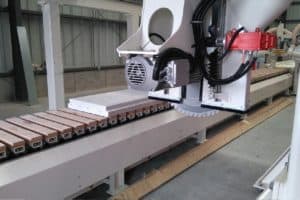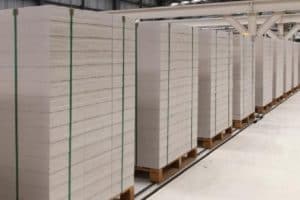Unique Technology
FLAT-CAKE TECHNOLOGY

FLAT-CAKE ADVANTAGES

Flexible production process
High-volume, large-variety and just-in-time production of reinforced panels is possible (100% blocks are also possible).
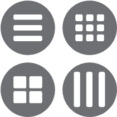
Complete product portfolio
Largest variety of products as the production process allows for more complex and thinner shapes and structures: panels of 40mm – 300mm thickness, up to 6m long and traditional blocks.

Superior product quality
Minimum cake handling and double-wired cutting technology result in high accuracy (<1mm tolerances) and superior SUPER SMOOTH product surfaces.

Energy efficient plant operation
Fewer handlings than (conventional) tilt-cake process resulting in efficiency, less breakage, and minimum energy usage.

Simplified machine infrastructure
Less cake handling results in simplified foundations and no requirement of overhead cranes.
FLAT-CAKE X TILT-CAKE



FLAT-CAKE PRODUCTION PROCESS
KEY STEPS OF THE PRODUCTION PROCESS
AAC is a batch manufacturing process. Aircrete Europe’s cutting-edge “flat-cake” technology reduces handling, cake cracks, sticking and other damages as compared to classical “tilt-cake” solutions. The main process steps are depicted in the image and are explained in more detail below:
- Raw Material preparation: Sand grinding with the ball mill
- Mixing: Sand, cement, lime, gypsum, and aluminium mix poured into moulds
- Reinforcement: Steel reinforcement for load-bearing products
- Pre-Curing: Chemical reaction results in rising and formation of porous “green” cake
- Cutting: Cakes are cut into required dimensions with Aircrete Europe’s special double-wired high-speed cutting frame
- Autoclaving / Curing: Freshly cut products are hardened by pressurized steam
- Unloading and Packing: Ready products are unloaded and packaged according to the type of product
- Sand (or fly-ash) is ground with water in a ball mill to produce the sand slurry
- Sand particle size is controlled before the sand slurry is pumped from ball mill into slurry tanks
- Other dry materials (lime, cement, gypsum & additives) are transported to the silos located in the mixing tower
- Aluminium powder is dosed using an Aircrete ALU SAFE System for maximum safety and dosing precision
- A mechanical dosing system connected to every silo outlet discharges raw materials to the weighing and dosing level
- This unique 9-component system automatically weighs the liquids and solids by mass per batch. Hereby measuring high precision whereby at the same time able to compensate variations in temperature (for solids) as well as densities (in slurries)
- The Aircrete Slow Speed Mixer mixes solids and liquids homogeneously to the right suspension
- The mixer outlet is lowered to cast (pour) slurry suspension bubble-free into the mould. Vibration needles optimize the slurry distribution and minimize air entrainment as a final step in the mixing and casting process
- If load-bearing AAC products are part of the product portfolio, a reinforcement station is installed
- Before introducing the steel reinforcement in the mix, an assembled steel mesh (for partition panels) or ready cage (for reinforced panels and elements) is dipped into anti-corrosion treatment
- Right after the casting of the mixed slurry into the mould, the steel reinforcement is automatically inserted into the mould by a needle crane
- The reinforcement frame stays inside the mould during the rising of the cake in the rising area, until it reaches its final state
- The casted mould is moved to the rising area by a traverser car
- After the cake has risen and reached an adequate hardness (about 3-4 hours), the cake is ready for the cutting process
- The mould is automatically opened and the cake can be lifted with a grabbing crane and moved to the cutting line
- After removing the cake, the mould is automatically cleaned and oiled on each cycle and it becomes immediately ready to be cast with slurry again
- The cutting line represents the heart of an Aircrete plant, defining its product portfolio and ensuring high-quality of the AAC products. Aircrete’s innovative cutting process involves a horizontally positioned cake
- Once the cake in the mould is ready for cutting, the mould opens from all sides and the grabbing crane picks up the entire green cake. This is the only step in our process where the cake is mechanically handled; limiting the risk of its damaging and eliminates tilting-related problems
- On the first section in the cutting process, the cross cut is made with oscillating and pneumatically spanned steel wires resulting in a precise cut. A recent innovation is the inclined cross cut frame, allowing for an even higher precision of the cut
- After the cross cut, the ‘pusher’ advances and gently rolls the cake on its frame steel bars (or strip bed) towards the High-Speed Cutting Frame (HSCF)
- In the HSCF, the Aircrete cutting system uses two wires (which oscillate at high speed). Thanks to this unique technology the final AAC products have a SUPER SMOOTH surface
- Simultaneously an oscillating horizontal wire cuts the cake to the required height
- Since the products are cut in a flat/horizontal position, openings between the products are created, eliminating sticking problems observed in tilt-cake systems. No separating or tilting machines are used in Aircrete plants
- The top of the cake can be also profiled with special knives. The outermost vertical wires remove the green cake’s side waste, leaving a smooth surface
- Once cut, the cake is rolled under the vacuum crane, where the top, front and end side crust are removed and 100% recycled back into the production process
- The cake leaves the cutting line already on an autoclaving frame
- The curing frames with cakes are stacked vertically (2 or 3 high) and transported directly to the autoclaves
- Cakes are cured in the autoclaves at a steam pressure of approximately 12 Bars. The complete curing cycle takes between 10 to 14 hours
- Applying Aircrete’s autoclave control system, steam is transferred between autoclaves to minimize energy consumption and costs
- After the curing process is completed, the double/triple stack is removed from the autoclaves and the white cakes are de-stacked
- In the unloading area, a semi-automatic crane takes the complete white cake and transfers the cakes one-by-one from the frame onto a dedicated packing line depending on the type of product
- Products are automatically placed on the pallets and transported by a conveyor system to the quality inspection and sorting place
- After unloading from frames the pallets are ready for final packaging e.g. stretch hood, shrink hood of foil, or strapping
- After-treatment such as sawing or surface milling is done on separate machines in the after-treatment area
- In case custom sizes or profiling for singular reinforced panels is required an automatic Aircrete sawing unit and/or milling bridges are used, located in a separate after-treatment area
Sawing Unit
- The sawing line is used to saw ‘white’ panels to customized dimensions. Panels from 1.2m to 8m can be sawed with any chosen increment (encoder driven)
- Multi-axis (three) sawing portal is CNC controlled. Rest pieces are transferred to the end of the outfeed line and picked up separately (e.g. by a forklift or a suction unit)
Milling Unit
- This station is used to mill the edge profiling (e.g. floor/roof panels, grooves, etc.) on the flat-lying panels. This unit is integrated into the sawing line area
- Two milling heads carefully create most accurate profiles (e.g. brick pattern) on the panel edges while the panel is traveling horizontally
- Aircrete Europe applies a dry method of milling (i.e. no water spraying), whereby the dust and small particles of AAC generated are collected in big bags of 1m³ volume
- Packaging alternatives for final AAC products are stretch foil, stretch hood, strapping and thermal shrinkage.
- Stretch Foil is an automated packaging solution that enables stability of pallets and protects the AAC products (blocks and panels) from dust, dirt, water, weather conditions and damage. This packaging solution wraps a transparent and highly stretchable plastic foil (~30mμ of thickness) around the AAC product and shrinks it tightly.
- Stretch Hood is also an automated packaging solution that comprises a single layer of thick foil which is automatically stretched and pulled over the pallet with AAC blocks. This single layer of foil allows for company branding to be pre-printed on the foil
- Strapping is a packaging solution which consists of applying 2 or 3 layers of the strap vertically and 1 (optional) horizontally. The strapping on AAC product can be done manually or automatically.
- Thermal Shrinkage Packaging solution is similar to stretch hood solution where an oversized bag (shrinkage film) into the AAC product. The main difference is that the Multi-axis is heated automatically or manually in order to shrink it tightly onto the AAC product.

